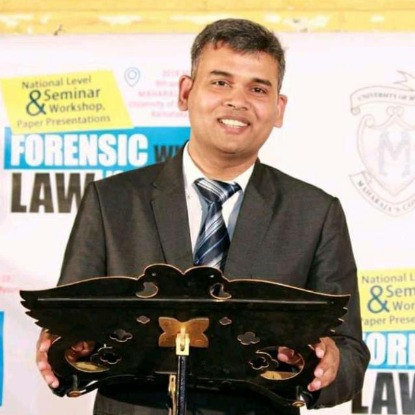In forensic science, few disciplines are as impactful in solving violent crimes as ballistics and toolmark analysis.
When a firearm is used in a crime, it leaves behind a trail of microscopic clues—marks on bullets, shell casings, or even entry and exit wounds.
Similarly, when tools like crowbars, screwdrivers, or pliers are used to force entry or tamper with property, they imprint unique patterns.
These seemingly small traces can become critical pieces of the puzzle in criminal investigations.
Ballistics and tool mark experts examine these patterns to connect weapons or tools to specific incidents, delivering clear, scientific answers when the stakes are high.
What Is Ballistics and Toolmark Analysis?
Ballistics
Ballistics is the scientific study of projectiles—mainly bullets and firearms. It is typically divided into three categories:
Internal Ballistics – what happens inside the firearm when it is fired
External Ballistics – the bullet's path after it leaves the barrel
Terminal Ballistics – the effect of the bullet upon impact with the target
In forensics, the focus is often on forensic Ballistics, which involves examining bullets, cartridges, and gun-related evidence to determine firearm usage, shooting distance, and trajectory.
Toolmark Analysis
Toolmark analysis examines the impressions or scratches left behind when a tool interacts with a surface. These marks are often found at break-in scenes, on tampered locks, cut wires, or forced open safes and doors. Each tool leaves unique patterns due to wear and manufacturing defects, making it possible to match a tool to a specific crime scene.
Why Are These Analyses Important in Forensic Investigations?
Ballistics and tool mark analysis play crucial roles in the following:
- Linking a firearm or tool to a specific crime
- Determining how a crime occurred
- Identifying or excluding potential suspects
- Supporting legal arguments with objective, physical evidence
- Reconstructing shooting scenes or forced entry methods
These methods offer tangible, physical connections between suspects, crime scenes, and objects involved in the offense.
Common Cases That Require These Services
Ballistics and tool mark forensic services are essential in the following:
- Homicide or attempted murder investigations
- Armed robbery and assault cases
- Accidental or self-inflicted shootings
- Property break-ins involving tools
- Vehicle thefts or sabotage cases
- Terrorist acts involving firearms or improvised tools
- Cold cases where firearms or break-in methods need re-examination
Even in seemingly minor incidents, these services can provide pivotal evidence that changes the outcome of a case.
Evidence Types Commonly Analyzed
The following materials are typically submitted for examination:
- Bullets and shell casings
- Firearms (pistols, rifles, shotguns, etc.)
- Magazines and ammunition
- Tool-impressed surfaces (metal, wood, plastic)
- Tools recovered from suspects
- Impacted surfaces like doors, locks, windows, and safes
- Gunshot residues (GSR) on clothing or body
Each item is carefully handled to preserve microscopic evidence crucial to the investigation.
Techniques Used in Ballistics & Toolmark Analysis
Comparison Microscopy
A dual microscope is used to compare bullet striations or tool marks side-by-side. This technique helps match marks made by a specific firearm or tool.
Ballistic Trajectory Analysis
Experts study the angle and direction of bullet travel to reconstruct the shooting scene—determining where the shooter stood and how events unfolded.
Firearm Function Testing
Every submitted firearm is test-fired under controlled conditions to check if it functions correctly and to generate comparison bullets.
Gunshot Residue (GSR) Analysis
Residue found on hands, clothing, or nearby surfaces is analyzed using techniques like SEM-EDX to determine if a person discharged a firearm recently.
Toolmark Casts and Replication
When marks are found at crime scenes, forensic experts make casts or high-resolution images to study and compare them to suspect tools.
Questions These Services Help Answer
- Was a specific firearm used in this crime?
- Was the tool found on the suspect used to break into the premises?
- From what distance was the shot fired?
- Can the bullets or cartridges found at the scene be matched to the recovered weapon?
- Was the shooting accidental, suicidal, or homicidal?
- Did a single or multiple tools make a tool mark?
Answers to these questions provide clear, objective insights into events often involving conflicting human testimonies.
How do Experts Contribute to Legal Proceedings?
Forensic experts are responsible for more than just technical testing. Their role includes:
- Collecting and preserving Ballistics or tool mark evidence
- Documenting observations and findings in detailed reports
- Using specialized equipment to conduct analysis
- Preparing court-admissible documentation
- Providing expert witness testimony during trials
Their scientifically validated opinions can significantly influence court decisions and law enforcement strategies.
Chain of Custody and Ethical Considerations
Maintaining a proper chain of custody is crucial in ensuring the integrity of forensic evidence. Every item must be documented from collection to analysis, ensuring it hasn't been altered or mishandled. Analysts also adhere to high ethical standards, focusing solely on facts and not on favoring either side of the legal argument.
Advancements in the Field
Modern forensic labs are equipped with:
- 3D imaging systems for more accurate bullet and tool mark comparisons
- Integrated Ballistics Identification Systems (IBIS) that compare cartridge casings across national databases
- Digital imaging software for detailed visualization of marks
- Non-destructive testing methods to preserve original evidence
These advancements have enhanced both speed and accuracy in case resolutions.
Conclusion
Ballistics and tool mark analysis represent the perfect fusion of science and investigation.
They clarify complex crime scenes, providing indisputable physical connections between suspects, weapons, and criminal actions.
Whether matching a bullet to a gun or linking a tool to a forced entry, these services offer critical insights that uphold the rule of law and support the pursuit of justice.
Have a case that needs an expert forensic weapon or toolmark analysis?
Contact us to understand how our scientific approach can help bring clarity and confidence to your investigation.

 April 26, 2025 - BY SIFS India
April 26, 2025 - BY SIFS India